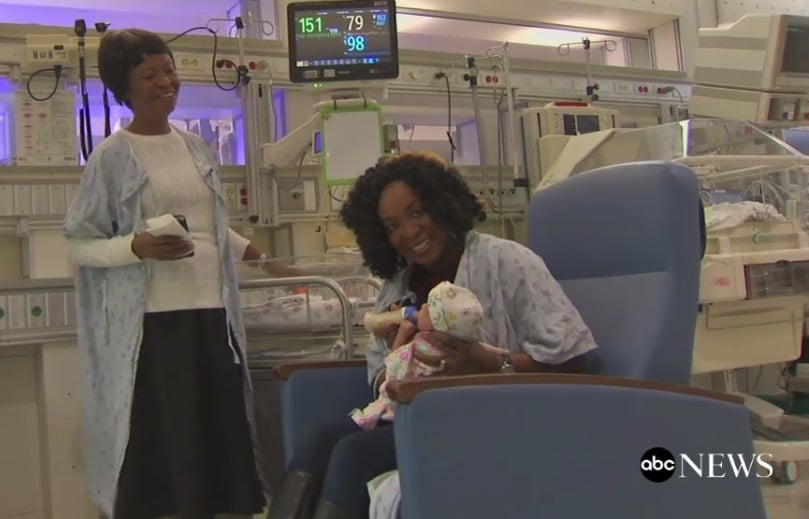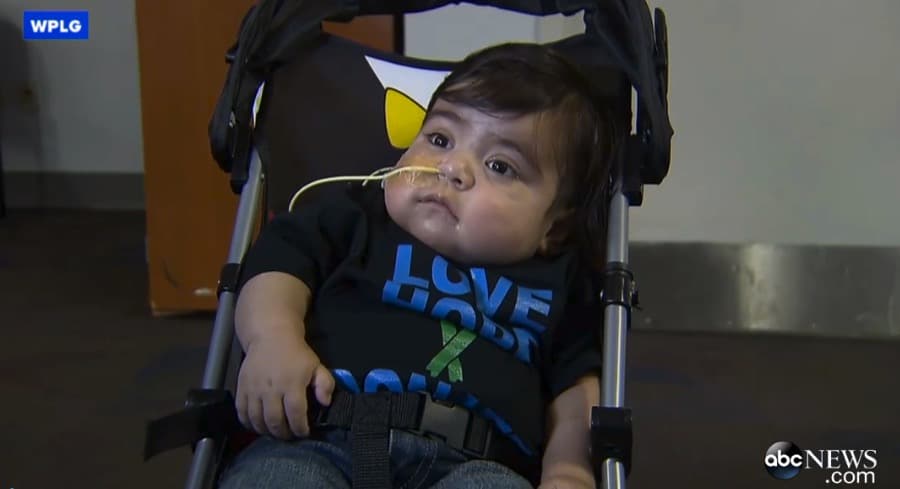During a routine 20 week ultrasound, Melissa Craig and her husband, Adam were forced to face every parents fear – their daughter was not developing properly.
Their growing baby had a giant omphalocele, a 1-in-10,000-births condition in which several of her abdominal organs were developing outside her body. Her intestines, stomach, spleen and liver were all involved.
When the baby named Bella, arrived doctors started an unconventional treatment to correct the condition.
An omphalocele (om-FAL-o-seel) can be mild, with only a small bit of intestine outside the abdomen, or severe, with most of the abdominal organs enveloped in a thin membrane. That is what Bella has. What’s more, omphaloceles often are tied to genetic defects. For the Craigs, an amniocentesis dispelled those worries. There was no chromosome damage, no cardiac anomalies, no syndromes. But Bella and her parents still faced a long road.
“The problem is, with this large of an omphalocele, the mortality rate can be as high as 70 to 80 percent,” said Dr. Donald Liu, Bella’s pediatric surgeon and the chief of pediatric surgery at the University of Chicago. He’s also part of the pediatric surgery group at the U. of C. that provides pediatric surgery services to Edward.
Bella’s doctors have rejected what for years had been the standard treatment, trying to gently push the organs back in place over a short period, for what’s commonly called “paint and wait.”
“We paint this sac with silvadine, an antibiotic cream, which will allow that shell to harden,” Liu explained. “It thickens … and becomes this hard coat over time.”
In addition to that added protection, skin begins growing around the base of the omphalocele, working its way up. The sac, meanwhile, is wrapped in gauze and held in place by a stretchy bandage that applies slight pressure.
“Over a six- to eight-month period,” Liu said, “the baby grows and this mass slowly, by gravity and this pressure dressing we do . . . and good nutrition, the baby’s abdominal cavity will accommodate this material, all the outside organs. And then six to eight months later, when we really feel good about it, we take it to the operating room and we close it.”
Bella’s parents are so comfortable with the process, they have now taken over the daily dressing duties.
While doctors are very confident that this procedure could eventually correct the condition they plan to operate at six to eight months.
“I believe we can save this baby. And we certainly, if anything, have given this baby the best chance to survive.”
Related Articles:
- Amazing Baby Defies Odds After Being Born With Only Half A Heart
- UK Doctors Outfit 5 Day Old Baby With Pacemaker
- Amazing Baby Born With Heart Outside Body
- UK Toddler Surviving With An Artificial Heart







Hi, my daugther was born with a giant omphaloccele. She is almost 3 months n she still cant breath on her own..did u have the same problem??? im taking real hard, but thanks to my husband not deploying because he knows how to calm me down